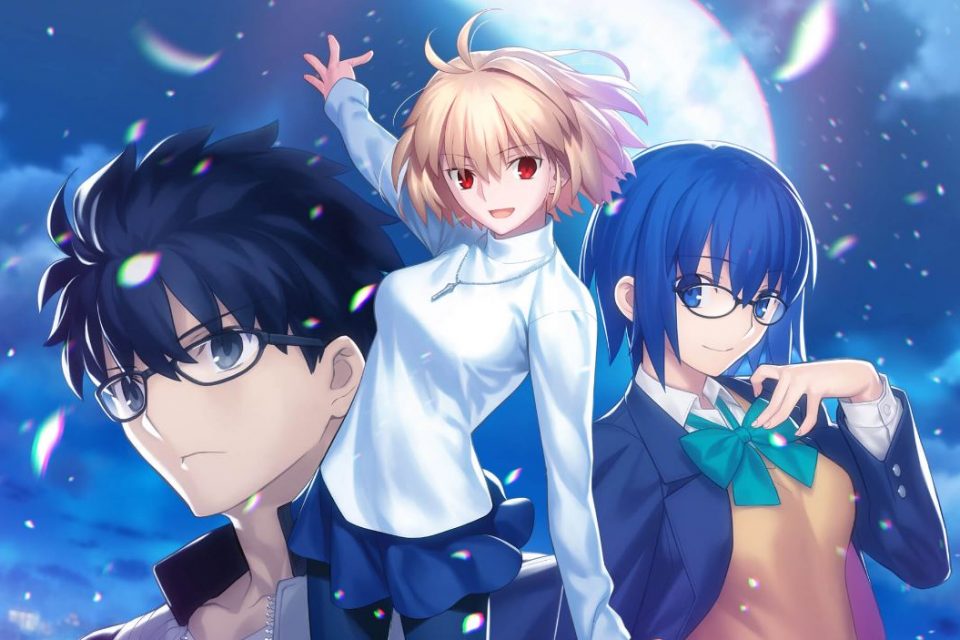Tsukihime PS4 Artbook Censored, Switch Version Unchanged
Has Sony's censorship policy gone too far? The alteration of the Tsukihime: A Piece of Blue Glass Moon artbook for the PlayStation 4 version sparks a heated debate about creative freedom versus platform restrictions. The changes, impacting a physical product bundled with the game, raise concerns about the increasing influence of platform holders on creative content.
The controversy centers around Aniplex's announcement regarding the artbook accompanying the Tsukihime remake. While the game itself remains untouched, the artbook included with the PlayStation 4 physical edition will feature modified artwork on two pages. This censorship, absent from the Nintendo Switch version of the artbook, has ignited discussions online about Sony's seemingly stricter approach to content regulation, especially concerning Japanese games.
| Title | Tsukihime: A Piece of Blue Glass Moon |
| Developer | Type-Moon |
| Publisher | Aniplex |
| Platforms | PlayStation 4, Nintendo Switch |
| Genre | Visual Novel |
| ESRB Rating | M (Mature 17+) |
| Reference | Wikipedia - Tsukihime |
The specific nature of the modifications remains undisclosed, fueling speculation and fan theories. Although Tsukihime received an M rating from the ESRB, indicating content suitable for mature audiences, some speculate the censorship targets specific character designs deemed too revealing by Sony's standards. This inconsistency between the ESRB rating and Sonys apparent intervention raises questions about the clarity and consistency of content guidelines across different platforms.
Adding to the complexity is the fact that the Nintendo Switch version of the artbook remains unaltered. The Switch, often perceived as a more family-friendly console, hosting the uncensored artbook while the PlayStation 4 version faces modifications has exacerbated the perception of Sonys bias against Japanese developers. This discrepancy has sparked conversations online, with some users pointing to a perceived double standard and questioning the rationale behind Sony's stricter approach.
The debate surrounding Sony's censorship practices is not new. Reddit users, including 'superkami64,' have highlighted Sony's increasing reputation for stricter content regulation compared to Nintendo's more lenient approach. These discussions often draw parallels with previous instances of censorship involving other Japanese titles, reinforcing the perception of a pattern of targeted restrictions.
The impact of these decisions extends beyond individual games. The censorship of physical products like artbooks creates a ripple effect, impacting collectors and enthusiasts. The limited edition of Tsukihime, with its bundled artbook, now offers different content depending on the chosen platform, creating an artificial divide and potentially diminishing the value of the PlayStation 4 version for collectors seeking the complete, uncensored artistic vision.
The Tsukihime artbook controversy highlights a broader issue surrounding platform holders' power to influence creative content. While platform guidelines are necessary to maintain certain standards, excessive intervention can stifle artistic expression and create inconsistencies across different versions of the same product. Finding the right balance between protecting audiences and respecting creative freedom remains a complex challenge in the gaming industry.
The debate continues to unfold online, with users expressing concerns about the potential chilling effect of such censorship on developers. The fear is that these restrictions may lead to self-censorship, where creators preemptively alter their work to avoid platform rejection, potentially homogenizing creative output and limiting artistic exploration.
The Tsukihime artbook censorship serves as a microcosm of the larger conversation about platform control, content regulation, and the future of creative expression in the gaming industry. As platform holders exert increasing influence, finding a sustainable equilibrium between protecting audiences, respecting artistic vision, and ensuring consistent experiences across platforms becomes paramount. The gaming community awaits further clarification from Sony regarding its decision, hoping for greater transparency and a clearer understanding of its content guidelines.


